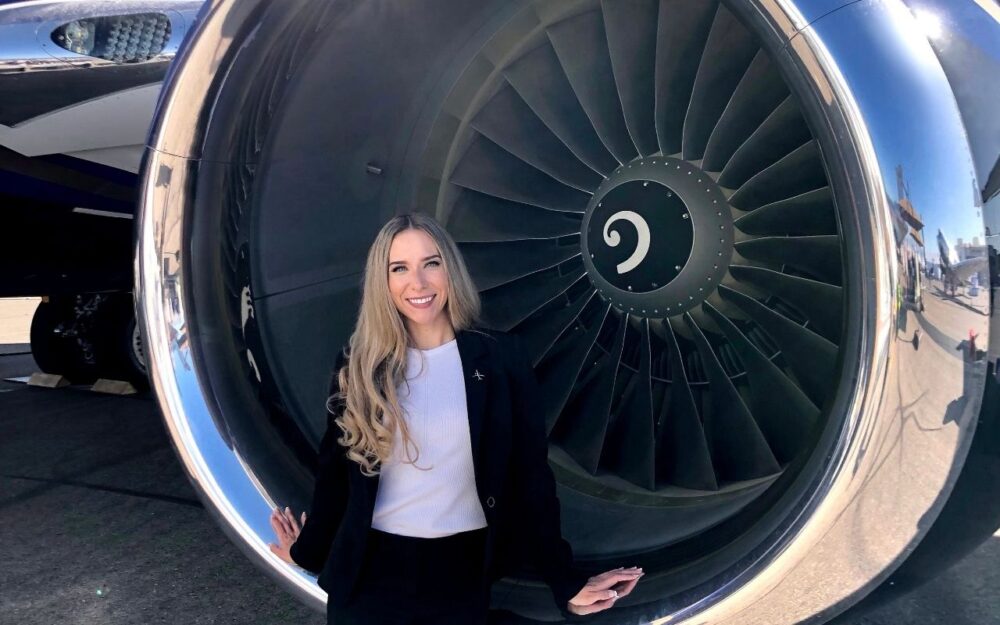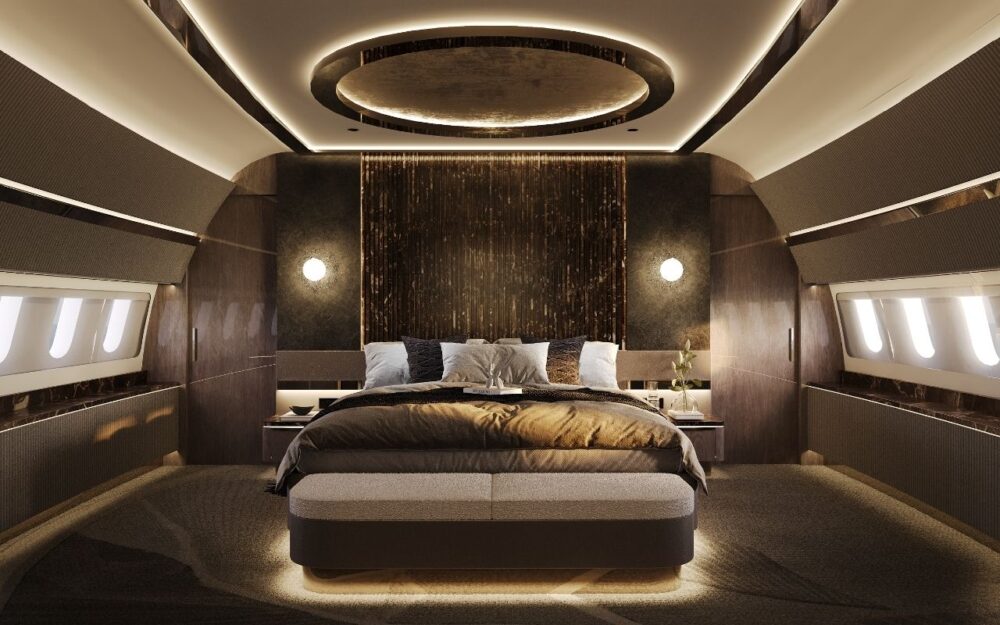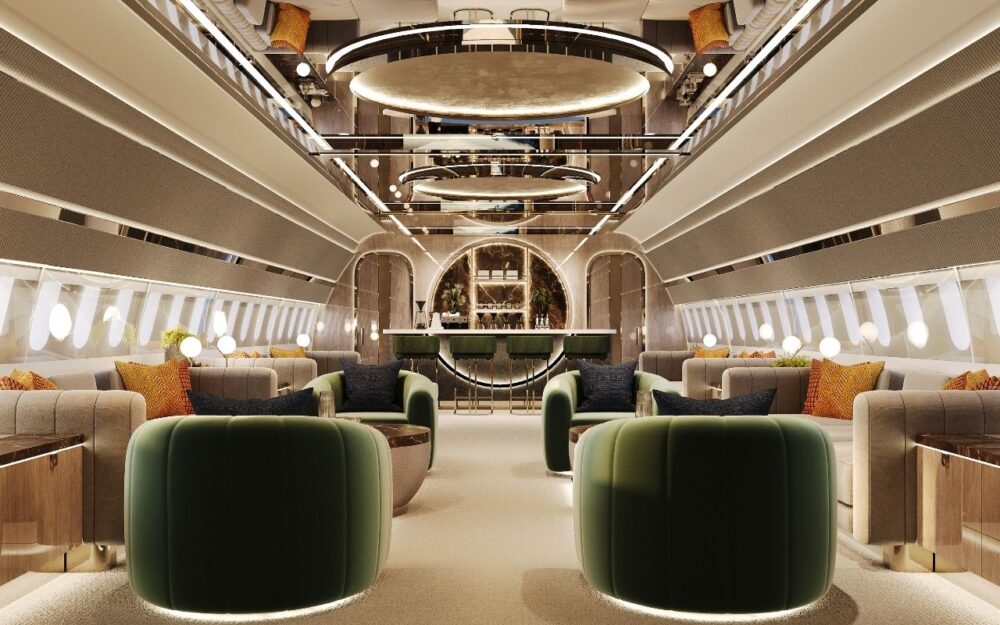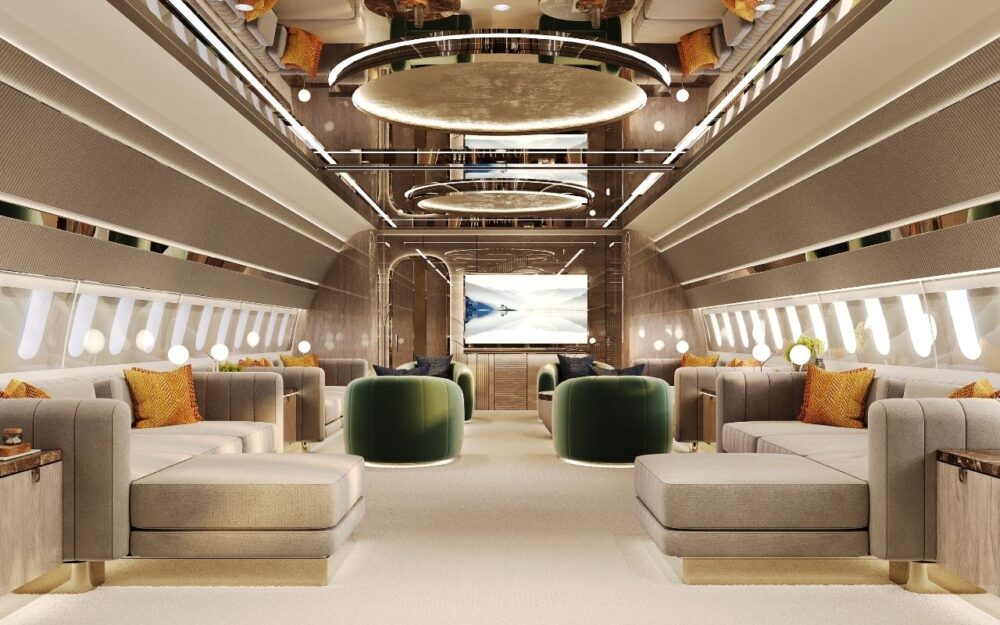Aviation’s creaking supply chains continue to be a major problem in delivering new aircraft, getting them in service, and keeping them functional. That’s especially visible in the cabin interiors world, where delays in manufacturing seats and other parts of the cabin have delayed (and continue to delay) many deliveries of both commercial airliners and private jets.
At the recent RedCabin Business Jet and VVIP Interiors Summit in Vienna, DirectIndustry discussed with industry players, from cabin designers to materials suppliers, gathered to discuss the state of the supply chain and how to navigate persistent bottlenecks.
The Private Aviation Perspective
Within the private aviation segment, designer Natalie Rodríguez, founder of Natalie Rodríguez Luxury Design in San Antonio, observes that the landscape has changed dramatically in recent years.
“There are a number of clients today who expect speed and immediacy — shaped by the culture of ‘one-click’ convenience in our daily lives,” she says.
Rodríguez emphasizes that a deep understanding of the supplier landscape is crucial to ensuring a successful project.
“If availability becomes an issue, we pivot quickly with equally refined alternatives. For customized or specialized requests, we anticipate longer lead times and manage expectations accordingly. It’s less about scarcity of options and more about responsiveness and agility.”
The Complexity of Commercial Cabin Design
On the commercial aviation side, Daniel Baron, founder of Tokyo-based LIFT Aero Design, points to the sheer scale and complexity of modern business-class seating.
“A typical long-haul business-class seat has nearly 100 elements that need to be defined, with multiple suppliers around the world,” Baron explains.
Every detail — from the fabric patterns to the color and texture of wall panels — requires multiple iterations and international coordination.
“The design of materials on walls and partitions involves custom-developed colors and patterns, usually made with silk screen and requiring several iterations. A seat fabric requires thinking about color combinations, patterns, and weave constructions — the result is often a mountain of samples.”
These samples often need to be shipped internationally for testing and approval, adding both time and complexity to the process.
Trade events like the Aircraft Interiors Expo and RedCabin’s own summit series help designers and suppliers see materials in real-world lighting and scale, but as Baron notes, “there is no substitute for hands-on prototyping.”
Ultimately, the lack of warehousing capacity among suppliers and the time needed for design development remain structural challenges. Yet, as Baron concludes,
“it’s key to realizing the ideas that create meaningful differentiation — which translates into brand affinity.”


Educating Management and Clients
Another part of the solution lies in upskilling senior management on supply chain realities.
“Top management at new airlines, or anyone brand new to the airline industry, may not comprehend that the cabin puzzle has so many pieces — nearly all custom-manufactured,” Baron says. “Even without supply chain issues, the cabin interior world is nothing like other industries.”
Education, he argues, can help airlines make decisions early enough to avoid “nasty surprises and compromises later.”
Customization, Transparency, and Realism
In private aviation, the supply chain operates on a smaller scale but with far greater customization per aircraft. Rodríguez says this creates unique pressures — especially when dealing with single, demanding clients.
“While I don’t see a single ‘fix’ for the supply chain, I do believe there’s room for greater transparency and flexibility,” she explains. “Expanding live inventory tools, strengthening communication across the chain, and recognizing the unique pressures of VVIP timelines would all go a long way.”
Equally important, Rodríguez adds, is a shared commitment to realistic scheduling.
“Attempting to meet an impossible deadline rarely serves anyone — quality is compromised, and the result still falls behind schedule. As an industry, we must set expectations with honesty and uphold superior standards of craftsmanship while still doing all we can to honor the client’s request.”
Suppliers Seek Consistency and Collaboration
Suppliers face their own challenges. Lauren Kenealy from Tapis, a New York–based supplier of fabrics and materials for aircraft seats and interiors, highlights the complexities around certification requirements that vary between OEMs, airlines, and suppliers.
“Some OEMs and airlines require testing from specific labs, which can lead to delays in shipping our materials out in the correct treatment,” Kenealy says. “Certification bottlenecks aren’t just about Boeing or Airbus-approved labs — inconsistent interpretations of requirements start at the design level, from color and finish choices to OEM transparency on final assembly.”
The industry’s talent drain following the COVID-19 pandemic has also compounded the problem.
“Retaining skilled labor, program management, and engineering support is still challenging,” she notes. “Many OEMs lost years of expertise that have been extremely hard to replace.”
Kenealy advocates for common certification standards and clearer communication from OEMs on program timelines to help suppliers align resources more effectively.
“We continue to push for visibility to help support project timelines,” she adds.

Collaboration and Pragmatism
Ellie Parkes from Replin by Hainsworth, a UK-based fabric manufacturer, shares an example of how collaboration and pragmatism can overcome supply challenges.
A small charter customer, unable to meet the minimum order quantity for bespoke fabrics, was guided toward a standard fabric and connected with a trim-and-finish partner to add embroidery.
“They got the quick turnaround they needed while still achieving custom detailing,” Parkes says. “Sometimes design is as much about compromise and pragmatism as it is about uniqueness.”
Parkes underscores the need for stronger relationships across the chain.
“Collaboration is key. There needs to be closer, more transparent working relationships between OEMs, airlines, studios, and suppliers — involved in planning from an early stage. It has to be more than a buyer-supplier transaction.”
A Shared Responsibility
Across both private and commercial aviation, the message is consistent: transparency, communication, and early collaboration are vital to building a more resilient, responsive supply chain.
Only through shared responsibility — from executives to suppliers — can the aviation industry overcome its ongoing turbulence and deliver the next generation of aircraft on time, and to the highest standards.
Read also






![Image [BUYING GUIDE] How to Choose the Right Industrial Robot?](/wp-content/uploads/sites/3/Industrial-Robot-320x213.jpg)

![Image [Buying Guide] How to Choose the Right Safety Shoes?](/wp-content/uploads/sites/3/Safety-Shoes-320x213.jpg)


![Image [Buying Guide] How to Choose the Right AMR?](/wp-content/uploads/sites/3/AMR-320x213.jpg)